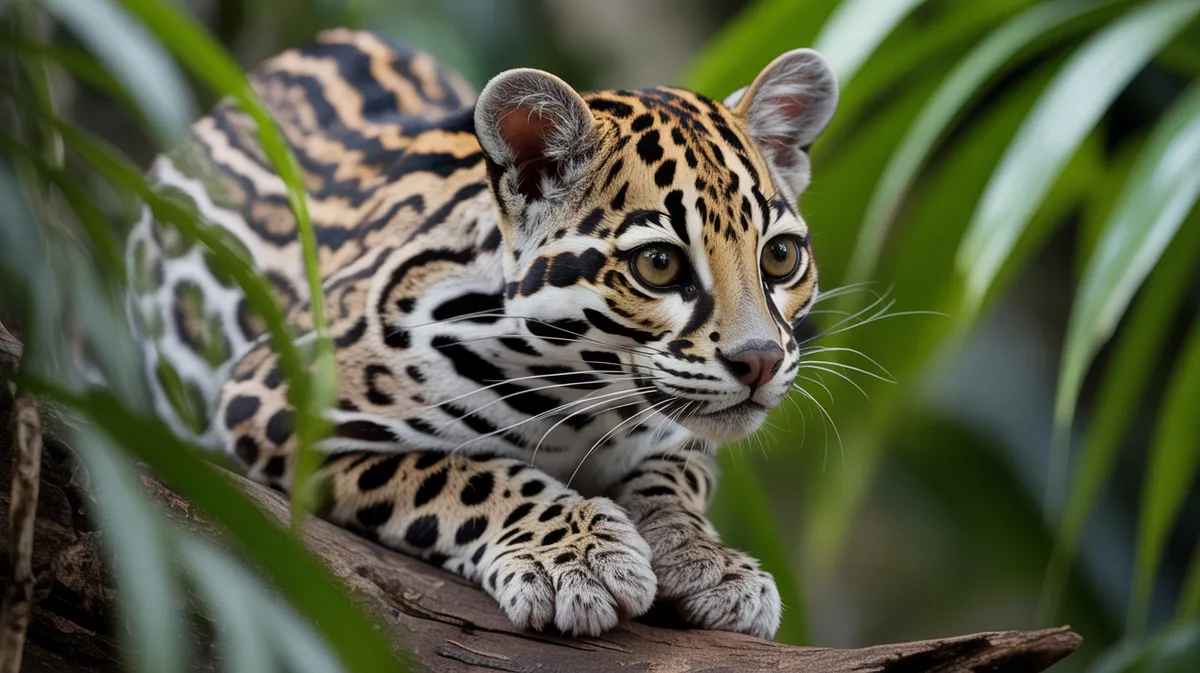
Margay
Leopardus wiedii
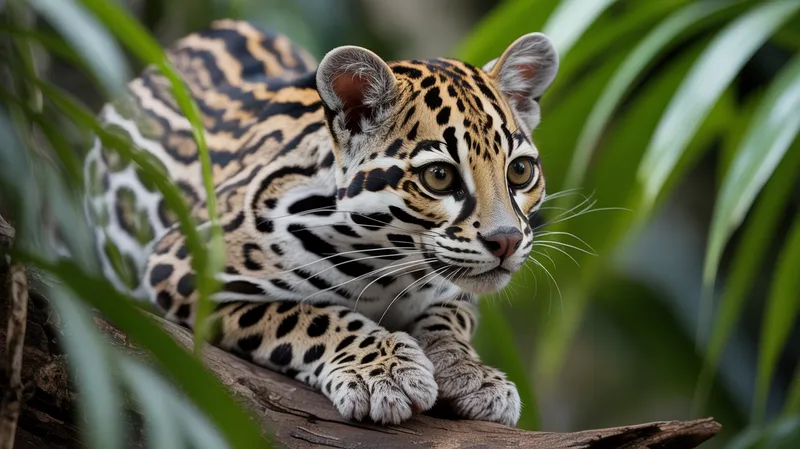
Meet the Margay
The Margay is a small, elusive wild cat native to Central and South America, renowned for its extraordinary agility and arboreal lifestyle. With a slender body, large eyes adapted for nocturnal vision, and a beautifully spotted coat, the Margay is often mistaken for the closely related ocelot, though it is smaller and more specialized for life in the trees. This feline is an expert climber, capable of rotating its ankles up to 180 degrees to descend trees headfirst and leap gracefully between branches. Margays are solitary and elusive, making them difficult to observe in the wild.
Classification
Mammal
Habitat
Tropical and subtropical rainforests
Diet
Carnivore
Lifespan
10-15 years
Conservation
Near Threatened
Weight
2.6-4 kg
📖Fascinating Facts
Tree Acrobat
The Margay has double-jointed ankles, allowing it to rotate its feet 180 degrees to climb headfirst down trees, a rare ability among cats.
Mimicry Master
Margays have been observed mimicking the sounds of their prey, such as tamarin monkeys, to attract and ambush them.
Nocturnal Hunter
Margays are primarily nocturnal, using their large eyes to hunt birds, small mammals, and reptiles in the dark forest canopy.
📋Detailed Description
The margay (Leopardus wiedii) is a small, highly arboreal wild cat, measuring 48–79 cm (19–31 in) in body length, with a tail nearly as long as its body (33–51 cm; 13–20 in), which aids in balance among the trees. Adults typically weigh between 2.6 and 4 kg (5.7–8.8 lbs). Its coat is soft and thick, marked by dark rosettes and streaks on a tawny to grayish background, providing camouflage in dappled forest light. The margay’s large, forward-facing eyes are adapted for nocturnal vision, and its broad paws with flexible toes enhance its grip on branches. Unlike most felids, the margay possesses remarkable ankle flexibility, allowing it to rotate its hind feet up to 180 degrees, enabling headfirst descent from trees and agile movement through the canopy. This species is solitary and territorial, with individuals occupying home ranges of 11–16 km², depending on habitat quality. Margays are elusive and primarily nocturnal, spending most of their lives in the trees, rarely descending to the ground. Their vocalizations include mews, growls, and a distinctive 'chirr' call, used mainly during the breeding season. Margays are long-lived for their size, with lifespans reaching up to 20 years in captivity, though likely shorter in the wild.
💡 Did you know?
Margays are so adept at arboreal life that they can hang from branches by one foot, using their long tail for balance.
🔬Research & Sources
Wikipedia Summary
The margay is a small wild cat native to Mexico, Central and South America. A solitary and nocturnal felid, it lives mainly in primary evergreen and deciduous forest.
Last Modified: 4/2/2025
🎭Behavior & Social Structure
Margays are obligate carnivores and opportunistic hunters, preying on small mammals (especially arboreal rodents), birds, eggs, reptiles, amphibians, and occasionally insects. They are known for their stealth and patience, often stalking prey silently through the canopy before executing rapid, acrobatic leaps. Margays have been observed mimicking the vocalizations of prey species, such as infant tamarins, to lure them closer—a rare example of vocal mimicry among felids. They are strictly solitary outside of the breeding season, marking their territories with scent glands and urine. Activity is predominantly nocturnal, with peak hunting occurring shortly after dusk and before dawn. During the day, margays rest in dense foliage or tree hollows, rarely venturing to the forest floor except to move between trees or access water. Social interactions are minimal, limited to brief encounters during mating or territorial disputes.
👶Reproduction & Life Cycle
Margays are polyestrous, with females coming into estrus several times a year. Courtship involves vocalizations and scent marking, and copulation is brief but may be repeated over several days. Gestation lasts approximately 76–84 days, after which a single kitten (rarely two) is born, typically in a secluded tree hollow or dense vegetation. The kitten is altricial, born blind and helpless, weighing about 85–125 grams. Eyes open after 2 weeks, and weaning occurs at around 2–3 months. Juveniles remain with the mother for up to 8–12 months, learning hunting and climbing skills before dispersing to establish their own territories. Sexual maturity is reached at 12–18 months. There is no distinct breeding season, but births may peak during periods of prey abundance.
🛡️Adaptations & Survival
The margay’s most notable adaptation is its extraordinary arboreal agility, enabled by flexible ankle joints that can rotate up to 180 degrees, allowing it to grasp branches securely and move headfirst down tree trunks—a trait shared only with the clouded leopard among felids. Its long tail provides balance during leaps and rapid directional changes. Large eyes and a reflective tapetum lucidum enhance night vision, critical for nocturnal hunting. Retractable claws and broad, soft footpads minimize noise and maximize grip. Its cryptic coloration offers camouflage in the forest understory. Behavioral adaptations include vocal mimicry to attract prey and a solitary, secretive lifestyle to avoid larger predators and human disturbance.
📚Research Sources
🎨Cultural Significance
In indigenous cultures of Central and South America, the margay is sometimes featured in folklore as a symbol of agility, stealth, and mystery. Its beautiful pelt was historically used in ceremonial attire and local trade, though this practice has diminished due to legal protections. The margay is less prominent in mythology than larger felids like the jaguar, but its elusive nature has contributed to its reputation as a 'ghost cat' in some local traditions. Today, it serves as an indicator species for healthy forest ecosystems and is occasionally referenced in ecotourism and conservation education programs.
🔬Recent Research & Discoveries
Recent studies using camera traps and genetic analysis have improved understanding of margay population structure, habitat use, and genetic diversity. Research published in the last decade has highlighted the species’ dependence on primary forest and vulnerability to fragmentation. Notably, a 2010 study documented vocal mimicry behavior in the wild, providing rare evidence of this advanced hunting strategy among felids. Ongoing research focuses on landscape connectivity, the impact of climate change on habitat suitability, and the effectiveness of protected areas. Conservation genetics is also being used to assess gene flow between isolated populations, informing management strategies.
🎥Wildlife Videos
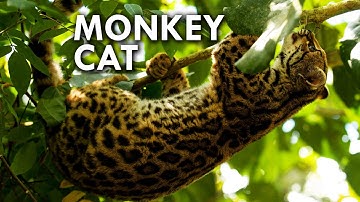
Margay: The Cat That Thinks It's a Monkey
This the most arboreal cat in the world, the trickster of the trees, the tamarin's bane, the Margay. Watch with Described Video here: ...
Animalogic
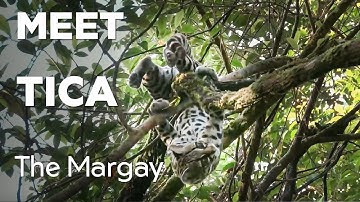
Meet Tica Margay
BIG CAT TV is a close look into the wild cat conservation efforts we support, and the exotic feline residents of Big Cat Rescue who ...
Big Cat Rescue

Wild Cats Uncovered: Cheetahs, Bobcats, and Lesser-Known Felines | Full Wildlife Documentary
Sleek, graceful and built for speed … race around with Wild Cats. This wild cats documentary opens up the world of Felines ...
Get.factual

MARGAY is a agile acrobat cat with a long tail, whose abilities will be envied even by monkeys
MARGAY is a agile acrobat cat with a long tail, whose abilities will be envied even by monkeys The evergreen humid forests of ...
WILDOPEDIA

The Enigmatic Margay Jungle Acrobat
The margay, a stealthy and enigmatic wild cat native to Central and South America, is renowned for its agility and arboreal ...
Exploring Animal & Nature
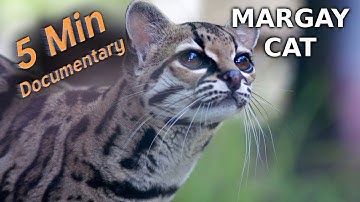
Margay Cat - 5 Minute Documentary
Step into the enchanting world of the margay cat with an intriguing five-minute documentary that unveils the mysterious allure of ...
Five Minute Documentaries
🌍Habitat Information
The Margay typically inhabits Tropical and subtropical rainforests environments. Margays have adapted to their environments with specialized features and behaviors.
Primary Habitat:
Tropical and subtropical rainforests
More detailed habitat information will be available soon.
🛡️Conservation Status
The Margay is currently classified as Near Threatened. Conservation efforts are crucial for preserving this species for future generations.
Common Threats:
- 🏠Habitat loss and fragmentation
- 🌡️Climate change impacts
- 🎯Hunting and poaching
- 🏭Human-wildlife conflict
⚠️Threats & Conservation Challenges
Major threats to the margay include habitat loss and fragmentation due to deforestation for agriculture, logging, and urbanization across its range. The species is particularly sensitive to forest disturbance, as it relies on continuous canopy cover. Illegal hunting for the pet trade and for its pelt, although reduced since the 1980s, still occurs in some regions. Road mortality and disease transmission from domestic animals are emerging threats. Population densities are naturally low, and the species’ elusive nature complicates accurate population assessments, but trends indicate a continuing decline. Conservation challenges include enforcing anti-poaching laws, maintaining habitat connectivity, and mitigating human-wildlife conflict.
🔬Scientific Classification
Scientific Name
Leopardus wiedii
Classification Hierarchy
🔍 About Taxonomic Classification
Taxonomic classification is a hierarchical system used by scientists to classify and organize living organisms based on shared characteristics and evolutionary relationships.
The system moves from broad categories (Kingdom) to increasingly specific ones, with each animal's scientific name typically consisting of its Genus and species.
📝Community Notes
Share your observations and insights about the Margay with our community of wildlife enthusiasts.
Join Our Community
Sign in to share your observations and connect with fellow wildlife enthusiasts.
Sign In to ContributeNo community notes yet
Be the first to share your observations about the Margay!
Explore Margay
Select a tab above to learn more about this amazing animal.
📸Photo Gallery
No photos available for this animal yet.
🌟Discover More Wildlife
Continue your journey of discovery with more fascinating animals from our database
